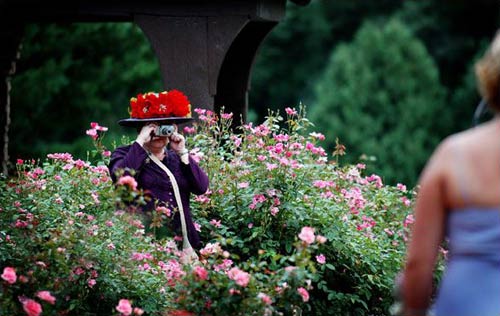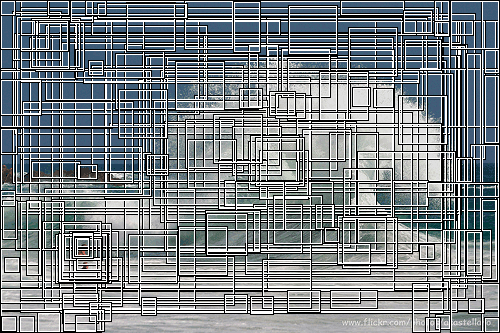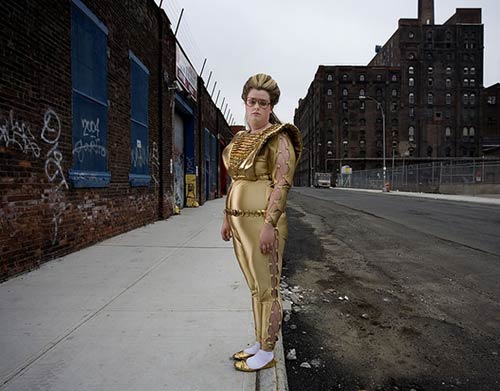kottke.org posts about photography
A photogenic drawing** that was assumed to have been made in the late 1830s may have actually been created 40 years earlier, making it one of the oldest photographic prints in existence.
Like the lost plays of Aeschylus that were written about but did not survive themselves, no known examples of the work of Wedgwood and his circle have ever been found. But Dr. Schaaf, in looking deeper into the leaf image, realized that these legendary lost images had something else in common: their creators were all part of the close social circle of the family of Henry Bright.
“The reason that I got so excited about this was that it was the most solid, indicative collection I’ve seen,” he said. “I’m fully prepared for ‘The Leaf’ to have been made by Henry Bright, or by his father, after the 1790s. But I’ve never seen a story that fits together so neatly.”
** A photogenic drawing is a precursor to the photograph and is created by placing an object on a piece of photosensitive paper and exposing it to light.
The abandoned supply shacks of Antarctic explorers Robert Falcon Scott and Ernest Shackleton are still intact and have been preserved by the cold.
While the preservation of food in the freezing temperatures and dry climate has been noted, bacterial decay still occurs. Besides, the World Monuments Watch describes it as one of the hundred most endangered sites in the world, and New Zealand’s Antarctic Heritage Trust (AHT) has been working in the last years to preserve it from corrosion.
These structures and the supplies contained within are almost 100 years old.
Manufactured Landscapes opens with an eight-minute tracking shot of a gigantic factory in China, the camera moving past row after row of workers assembling widgets until you feel like the factory floor circumnavigates the globe. The point of the shot, as with Edward Burtynsky’s photography, is to encourage the viewer to do some rudimentary mathematics about the scale of industry in the world:
eight minutes to move across one factory + look at all those employees + how many factories like this are there in China? = wow, that’s a lot of widgets
While it’s unfair to say that the movie goes downhill from there, the tracking shot packs such a punch that the rest of the film seemed lacking in comparison. It was the only shot in the film that really felt like the cinematic equivalent of Burtynsky’s photography…a long photograph, if you will.
Extensive series of photographs of a pig being butchered.
The pig is Berkshire, from a small farm in upstate NY. It was slaughtered at a small family slaughterhouse nearby, on the Thursday before the class. So this pig had been dead for less than a week before being butchered.
If you want to know where your bacon or ham-related food comes from, here’s your chance. (thx, derrick)
James Danziger on the photographs of the Florida teens accused of beating a classmate and filming it for YouTube.
The pictures of the accused are startling in the banality of the faces. (While the spelling of many of the names — April, Britney, Brittini, Cara, Kayla, Mercades, Stephen, Zachary bring to mind a revived Mouseketeers.) A number of the girls look surprisingly similar, but minus the prison garb, they could just as easily be reacting to a berating for poor schoolwork. The boys, who were posted as lookouts while the girls carried out the beating, look a little more ready for jail.
The pictures are fascinating in the narrow range of emotion they convey, from self-pity to sullenness, but to my mind all stop before genuine contriteness. (I’m reading this in, of course, but I have a hunch I’m right.) Yet there’s an all-American look to these kids that can only remind us how narrow the line is between good and evil.
The original photos are here.
Matt Jones argues that short looping videos are the real long photographs.
A loop would be a captured action or situation rather than a narrative, where the duration of the loop is set but the loop goes on forever so you can study the layers, the detail, the figure and the ground in the same way you can a photo. A bottled system not a short story. Think about all the tiny clips you’ve played again and again on the internet just to see one aspect, one moment, act out — a goal or a dramatic chipmunk. Not stories, but toy moments.
Photo series of food that takes the shape of its container. The peas are my favorite.
Update: Irving Penn did a well-known series of frozen foods in the 1970s. One of the prints was recently sold for $85,000. (thx, rob)
Awesome collection of folk graphics and photography protesting Flickr’s decision to let members post short videos. But without the video, we’d miss out on stuff like this. (via waxy)
Photographer Eric Etheridge alerted me to a new series he recently started on his WordBlog called Photography: The Missing Criticism, “which aims to bring great writing on photography back into print”. The series currently consists of a 1981 essay by Tod Papageorge on Walker Evans and Robert Frank and a 2002 essay by Papageorge on Robert Adams.
Great set of photographs showing how the Space Shuttle gets ready for takeoff, from the Vehicle Assembly Building all the way to the launch pad.
Errol Morris returns to his Times blog for the first time since his examination of the Roger Fenton photographs and covers re-enactments in documentary films, a technique he pioneered in the excellent The Thin Blue Line, and how it applies to truth in photography.
Critics argue that the use of re-enactments suggest a callous disregard on the part of a filmmaker for what is true. I don’t agree. Some re-enactments serve the truth, others subvert it. There is no mode of expression, no technique of production that will instantly produce truth or falsehood. There is no veritas lens — no lens that provides a “truthful” picture of events. There is cinema verite and kino pravda but no cinematic truth.
And then:
Is the problem that we have an unfettered capacity for credulity, for false belief, and hence, we feel the need to protect ourselves from ourselves? If seeing is believing, then we better be damn careful about what we show people, including ourselves — because, regardless of what it is — we are likely to uncritically believe it.
Flickr photoset of an abandoned amusement park in Ohio called Chippewa Lake.
Hidden on a lakeshore in Medina County is one of the state’s most unique forgotten treasures: the abandoned amusement park called Chippewa Lake. What you’ll find there today is the tragic shell of a once-glorious family fun park, one with a history going back to the 1840s. The crying shame is that it’s been reduced to an inadequately-fenced-off stretch of acres, overgrown with every imaginable form of vegetation native to this state and festooned with faded NO TRESPASSING signs.
(via maggie)
A NY Times reporter was assaulted while taking photos of some men putting up illegal posters near Madison Square Park. The rationale for his inclination not to press charges is an interesting one:
While my assailant’s actions were frightening, they resulted in part from what he interpreted as provocation: that is, my taking pictures after he had explicitly warned me not to. He did not take my wallet, cash or briefcase; something he could easily have done while I was on the ground. Nor do I recall him using much more force than was needed to wrest the camera from me. He didn’t kick me gratuitously when I was down. He did what he threatened to do, but no more.
In the greater scheme of things, my quarrel isn’t with him, anyway. It’s with the suits who made the decision in the first place to undertake an illegal marketing campaign.
Update: Maybe Rocko got his logo from the Rocky comic strip? (thx, joakim)

I *love* this photo. Found it here; it was taken by Mindy Meyers.
Interview with Errol Morris in the Columbia Journalism Review about Standard Operating Procedure.
Somebody comes up to you and says, “I’m a postmodernist; I don’t care about truth; it’s subjective.” My answer is, “So it doesn’t matter who pulled the trigger? It doesn’t matter whether someone committed murder, or whether someone in jail is innocent or not?” I believe that it does matter. What happens in the world matters a great deal.
Morris also says that there will be a web site that accompanies the film where you can view all the Abu Ghraib photos in the order that they were taken.
You can click on a photograph and an iris opens up — you go into the photograph, and inside of the photograph is context. Take, just for example, the Gilligan photograph, the one on the box, with the wires. I rubber-band that photograph with the other ones taken at the same time, so that it becomes a group of related photographs. There’s software that allows you to reconstruct the room from the different angles of the photographs. Then I have biographies that you can click on for all the people who were in the room, and their own accounts. Plus you can see stuff that I recorded for this movie. In other words, you can really enter the world of the photograph.
Photos of people in their beds by Thierry Bouet. Dumb Flash interface alert: click on “au lit” to see the beds. (thx, juliette)
Mike Johnston on the camera he would like to own, a decisive moment digital (DMD) camera.
So there you have it: a small, light, unobtrusive carry-around camera with great handling and world-class responsiveness, capable of being used in all manner of lighting conditions and yielding DSLR-quality results on the gallery wall. The 21st-century equivalent of Henri Cartier-Bresson’s stealthy street-shootin’ Leica.
If you tell photographer Izaz Rony where you’ll be at a particular time, he’ll come and take your picture without you knowing it.
Using information provided earlier about their weekly routine, the photographer will arrive on the scene, and unseen, take shots of the subject. The subject will be photographed walking through the streets, going about their daily business. Without posing and artifice, the camera captures only the natural beauty of the person.
Andrew Hearst calls it “surveilling yourself”.
The Desire Paths Flickr pool. Desire paths are improvised paths built collectively by pedestrians trying to find the shortest way across the grass, like ants laying down pheromone trails to food. I’ve heard of some clever institutions who wait for desire paths to be laid down by pedestrians and then put permanent sidewalks in those places.
The Abu Ghraib article by Errol Morris and Philip Gourevitch which I wrote about here and was subsequently taken down is back online. For now. Get it while you can. (thx, tom)
Powerful and disturbing article by Philip Gourevitch and Errol Morris from this week’s New Yorker about the photographs taken at Abu Ghraib.
Later, when the photographs of crimes committed against Iraqi prisoners at Abu Ghraib were made public, the blame focussed overwhelmingly on the Military Police officers who were assigned to guard duty in the Military Intelligence cellblock — Tiers 1A and 1B — of the hard site. The low-ranking reservist soldiers who took and appeared in the infamous images were singled out for opprobrium and punishment; they were represented, in government reports, in the press, and before courts-martial, as rogues who acted out of depravity. Yet the abuse of prisoners at Abu Ghraib was de facto United States policy. The authorization of torture and the decriminalization of cruel, inhuman, and degrading treatment of captives in wartime have been among the defining legacies of the current Administration; and the rules of interrogation that produced the abuses documented on the M.I. block in the fall of 2003 were the direct expression of the hostility toward international law and military doctrine that was found in the White House, the Vice-President’s office, and at the highest levels of the Justice and Defense Departments.
Never mind liberty, it would seem that we’re giving up our humanity for security.
Update: Nuts, they took the article offline for some reason…
Update: Looks like the article is back up. For now.
Newer posts
Older posts









Stay Connected